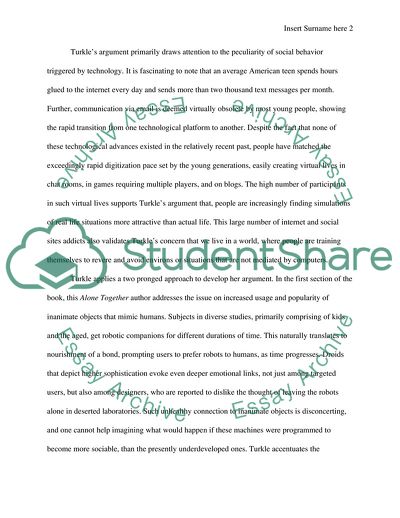Cite this document
(Technology and Social Networks: A Demise of Human Relations Term Paper, n.d.)
Technology and Social Networks: A Demise of Human Relations Term Paper. https://studentshare.org/psychology/1826347-alone-together-by-sherry-turkle
Technology and Social Networks: A Demise of Human Relations Term Paper. https://studentshare.org/psychology/1826347-alone-together-by-sherry-turkle
(Technology and Social Networks: A Demise of Human Relations Term Paper)
Technology and Social Networks: A Demise of Human Relations Term Paper. https://studentshare.org/psychology/1826347-alone-together-by-sherry-turkle.
Technology and Social Networks: A Demise of Human Relations Term Paper. https://studentshare.org/psychology/1826347-alone-together-by-sherry-turkle.
“Technology and Social Networks: A Demise of Human Relations Term Paper”. https://studentshare.org/psychology/1826347-alone-together-by-sherry-turkle.


